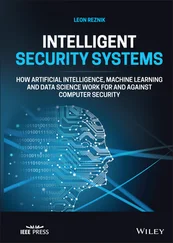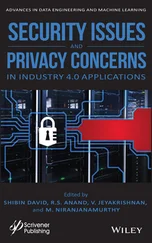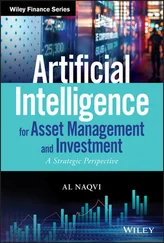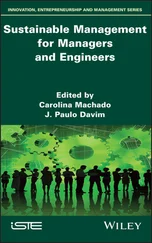1 Cover
2 Title Page SCIENCES Networks and Communications , Field Director – Guy Pujolle Network Management and Control , Subject Head – Francine Krief
3 Copyright First published 2022 in Great Britain and the United States by ISTE Ltd and John Wiley & Sons, Inc. Apart from any fair dealing for the purposes of research or private study, or criticism or review, as permitted under the Copyright, Designs and Patents Act 1988, this publication may only be reproduced, stored or transmitted, in any form or by any means, with the prior permission in writing of the publishers, or in the case of reprographic reproduction in accordance with the terms and licenses issued by the CLA. Enquiries concerning reproduction outside these terms should be sent to the publishers at the undermentioned address: ISTE Ltd 27-37 St George’s Road London SW19 4EU UK www.iste.co.uk John Wiley & Sons, Inc. 111 River Street Hoboken, NJ 07030 USA www.wiley.com © ISTE Ltd 2022 The rights of Mohamed-Aymen Chalouf to be identified as the author of this work have been asserted by him in accordance with the Copyright, Designs and Patents Act 1988. Any opinions, findings, and conclusions or recommendations expressed in this material are those of the author(s), contributor(s) or editor(s) and do not necessarily reflect the views of ISTE Group. Library of Congress Control Number: 2022931274 British Library Cataloguing-in-Publication Data A CIP record for this book is available from the British Library ISBN 978-1-78945-053-8 ERC code: PE7 Systems and Communication Engineering PE7_1 Control engineering PE7_8 Networks (communication networks, sensor networks, networks of robots, etc.)
4 1 Multicriteria Selection of Transmission Parameters in the IoT 1 Multicriteria Selection of Transmission Parameters in the IoT Sinda BOUSSEN1, Mohamed-Aymen CHALOUF2 and Francine KRIEF3 1 Mediatron, University of Carthage, Tunis, Tunisia 2 IRISA, University of Rennes 1, Lannion, France 3 LaBRI, Bordeaux INP, Talence, France
1.1. Introduction 1.2. Changing access network in the IoT 1.3. Spectrum handoff in the IoT 1.4. Multicriteria decision-making module for an effective spectrum handoff in the IoT 1.5. Conclusion 1.6. References
5 2 Using Reinforcement Learning to Manage Massive Access in NB-IoT Networks 2.1. Introduction 2.2. Fundamentals of the NB-IoT standard 2.3. State of the art 2.4. Model for accessing IoT terminals 2.5. Access controller for IoT terminals based on reinforcement learning 2.6. Performance evaluation 2.7. Conclusion 2.8. References
6 3 Optimizing Performances in the IoT: An Approach Based on Intelligent Radio 3.1. Introduction 3.2. Internet of Things (IoT) 3.3. Intelligent radio 3.4. Conclusion 3.5. References
7 4 Optimizing the Energy Consumption of IoT Devices 4.1. Introduction 4.2. Energy optimization 4.3. Optimization techniques for energy consumption 4.4. Energy optimization in the IoT 4.5. Autonomous energy optimization framework in the IoT 4.6. Proposition of a self-optimization method for energy consumption in the IoT 4.7. Conclusion 4.8. References
8 5 Toward Intelligent Management of Service Quality in the IoT: The Case of a Low Rate WPAN 5.1. Introduction 5.2. Quick overview of the IoT 5.3. IEEE 802.15.4 TSCH approach 5.4. Transmission scheduling 5.5. Routing and RPL 5.6. Combined approach based on 802.15.4 TSCH and multipath RPL 5.7. Conclusion 5.8. References
9 6 Adapting Quality of Service of Energy-Harvesting IoT Devices 6.1. Toward the energy autonomy of sensor networks 6.2. Fuzzyman: use of fuzzy logic 6.3. RLMan: using reinforcement learning 6.4. Toward energy autonomous LoRa nodes 6.5. Conclusion 6.6. References
10 7 Adapting Access Control for IoT Security 7.1. Introduction 7.2. Defining security services in the IoT 7.3. Access control technologies 7.4. Access control in the IoT 7.5. Access control framework in the IoT 7.6. Conclusion 7.7. References
11 8 The Contributions of Biometrics and Artificial Intelligence in Securing the IoT 8.1. Introduction 8.2. Security and privacy in the IoT 8.3. Authentication based on biometrics 8.4. Multifactor authentication techniques based on biometrics 8.5. Authentication techniques based on biometrics and machine learning 8.6. Challenges and limits 8.7. Conclusion 8.8. References
12 9 Dynamic Identity and Access Management in the IoT: Blockchain-based Approach 9.1. Introduction 9.2. Context 9.3. Blockchain for intelligent identity and access management 9.4. Challenges 9.5. Conclusion 9.6. References
13 10 Adapting the Security Level of IoT Applications 10.1. Introduction 10.2. Definitions and characteristics 10.3. IoT applications 10.4. IoT architectures 10.5. Security, trust and privacy protection in IoT applications 10.6. Adapting the security level in the IoT 10.7. Conclusion 10.8. References
14 11 Moving Target Defense Techniques for the IoT 11.1. Introduction 11.2. Background 11.3. Related works 11.4. LMTD for the IoT: a qualitative survey 11.5. Network components in the IoT: a vast domain for MTD 11.6. An MTD framework for the IoT 11.7. Discussion and avenues for future research 11.8. Conclusion 11.9. References
15 List of Authors
16 Index
17 End User License Agreement
1 Chapter 1Table 1.1. Some vehicular network services and the corresponding QoS parametersTable 1.2. Weight estimation for services considered in vehicular networksTable 1.3. Simulation parameters for scenario 1Table 1.4. Simulation parameters for scenario 2Table 1.5. Simulation parameters for the SUMO vehicle
2 Chapter 2Table 2.1. Physical channel and signals from the NB-IoT
3 Chapter 3Table 3.1. Summary of articles presented
4 Chapter 4Table 4.1. Parameters for simulation scenariosTable 4.2. Characteristics of simulation scenarios 1 and 2Table 4.3. Characteristics of simulation scenarios 3 and 4
5 Chapter 5Table 5.1. Model Open Systems Interconnection (OSI) in “classic” Internet protoc...
6 Chapter 6Table 6.1. Characteristics of different sources of energy (from Vullers et al. 2...Table 6.2. Set of rules used by the inference motorTable 6.3. Simulation parameter values. Details of parameters of P-FREEN, Fuzzym...
7 Chapter 7Table 7.1. IoT-MAAC attributesTable 7.2. Principle of the inference base of the TSK model for evaluating the t...
8 Chapter 8Table 8.1. Comparison of biometric characteristics according to the following pr...Table 8.2. Description of authentication factorsTable 8.3. Notation table
9 Chapter 11Table 11.1. Tokens in the MTD domainTable 11.2. Physical layer components (OSI L1) and variants for the IoTTable 11.3. Components of the link layer (OSI L2) and its variants for the IoTTable 11.4. Components of the network layer (OSI L3) and its variants for the Io...Table 11.5. Components of the transport layer (OSI L4) and its variants for the ...Table 11.6. Application (OSI L5-7) layer components and variants for the IoT
1 Chapter 1Figure 1.1. Proposed architecture for a context aware IoT device/object. For a c...Figure 1.2. General context of decision-makingFigure 1.3. Transmission of video from the scene of an accident in VANET network...Figure 1.4. Score variation in VANET networks for transmission of a video messag...Figure 1.5. Entertainment service on a highway in CR-VANET networksFigure 1.6. Variation of the scores of intelligent radio channels for the entert...
2 Chapter 2Figure 2.1. Impact on performance of the number of IoT devices simultaneously at...Figure 2.2. NB-IoT deployment modesFigure 2.3. Structure of a preamble sequence. For a color version of this figure...Figure 2.4. Random access procedureFigure 2.5. System model. For a color version of this figure, see www.iste.co.uk...Figure 2.6. System for regulating arrivalsFigure 2.7. Access probability with the adaptive controllerFigure 2.8 Access probability with the controller using TD3Figure 2.9. Average latency of the terminals with the adaptive controllerFigure 2.10. Average latency of the terminals with the controller using TD3Figure 2.11. The average recompense with the adaptive controllerFigure 2.12. The average recompense with the controller using TD3Figure 2.13. Access attempts (blue) and abandonments (red) with the adaptive con...Figure 2.14. Access attempts (blue) and abandonments (red) with the controller u...
Читать дальше












